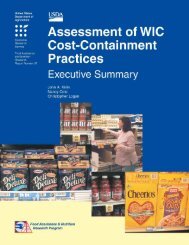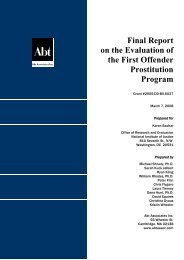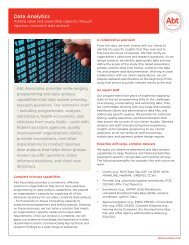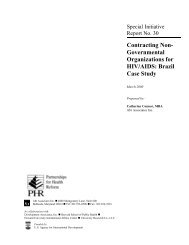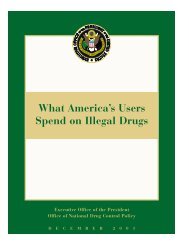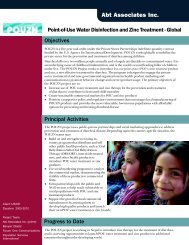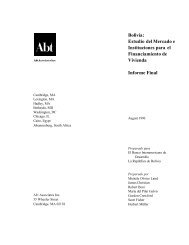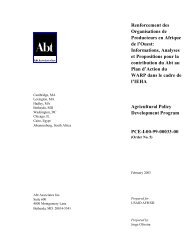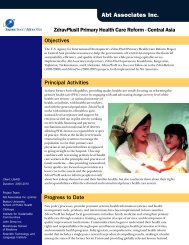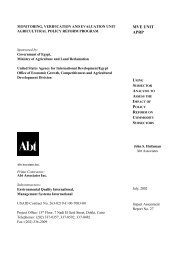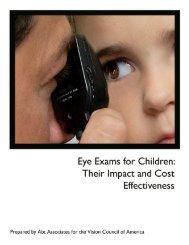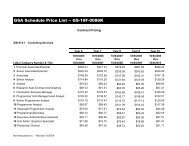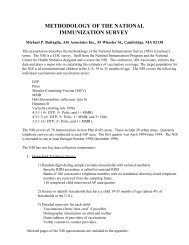Fertilizer Production And Marketing In Egypt ... - Abt Associates
Fertilizer Production And Marketing In Egypt ... - Abt Associates
Fertilizer Production And Marketing In Egypt ... - Abt Associates
You also want an ePaper? Increase the reach of your titles
YUMPU automatically turns print PDFs into web optimized ePapers that Google loves.
• Distributors and wholesalers are mainly located in the big cities or big towns<br />
• Retailers, who receive fertilizer from wholesalers and sell it to farmers. (Retailers are mainly<br />
located in villages close to farmers.)<br />
Table 4: Shares of the Different <strong>Marketing</strong> Channels of Nitrogen <strong>Fertilizer</strong><br />
(Percent)<br />
Year Domestic Sales PBDAC Cooperatives Private<br />
Sector<br />
1995/96 6529 89 2 6<br />
1996/97 6484 59 19 21<br />
1997/98 5428 20 21 54<br />
1998/99 5975 9 15 75<br />
1999/20 6386 9 13 77<br />
2000/2001 6980 11 19 69<br />
February 2002 N.A. 30 20 50<br />
March 2002 N.A. 50 20 30<br />
Sources: 2002: MALR, Ministerial Decrees No. 303 and 413 for the year 2002. 199596-2000/01: Ministry of Public<br />
Enterprises, Supreme Council of Chemical <strong>Fertilizer</strong>, unpublished data.<br />
One of the benchmarks of APRP required that “ The GOE will issue instructions to fertilizer<br />
factories to sell fertilizer without quotas for any group under commercial conditions and will<br />
develop an overall fertilizer policy framework emphasizing fertilizer production, pricing trade<br />
and private sector participation”. <strong>In</strong> practice, this did not happen. <strong>In</strong> theory, it is expected that as<br />
the number of traders dealing with the producing factories increases competition among them will<br />
increase, to the benefit of the final user of fertilizer. However, from the practical and operational<br />
accounting point of view, the producing factories prefer to deal with a relatively small number of traders<br />
who handle large quantities of their products. Abou Qir Factory has only 27 private distributors in<br />
addition to PBDAC and about three general agricultural cooperatives who handle all of its products.<br />
The selection of the private traders is based on previous history of transactions of these traders with the<br />
factory. Any distributor will be dropped from the list if he misbehaves in the market. This type of<br />
supervision of the factory over its clients of distributors is expected to lead to competition among<br />
themselves to show good behavior in the market.<br />
During the period from 1995/96 to 1999/2000, the share of PBDAC declined gradually from 89 % of<br />
domestic sales of chemical fertilizer to only 9 % while the share of the private sector increased from 6<br />
% to 77 % and the share of the agricultural cooperatives fluctuated closer to 20%. However, in<br />
February 2002, the GOE issued instructions to the producing factories to increase the share of PBDAC<br />
to 30 % by reducing the share of the private sector to 50 %. Within the following month, new<br />
instructions were issued to increase the share of PBDAC to 50 % while decreasing the share of the<br />
private sector to only 30 %. <strong>In</strong>vestigations were made for the quick change in the GOE policy. The<br />
reasons mentioned include:<br />
• <strong>In</strong>creased exports by the private sector due to increased world prices.<br />
• <strong>In</strong>creased prices paid by farmers.<br />
7



